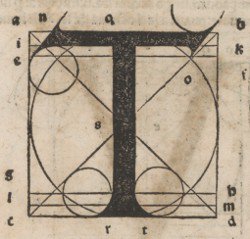
Pablo García Loaeza
Professor of Spanish American Literature and Culture
Department of World Languages, Literatures, and Linguistics
Pablo.Garcia[at]mail.wvu.edu
304-293-8323
Chitwood Hall 110
PO Box 6298
Morgantown WV 26506-6298
I am an enthusiastic teacher who encourages active participation by creating a low-anxiety environment in the classroom. I believe learning is the best part of teaching and that humility, flexibility, and self-discipline are the hallmarks of a good teacher.
My research focuses mainly on early-modern Spanish America. I continue to be particularly interested in historiography in New Spain. My recent projects have to do with the conquest of Mexico: a collection of essays that I co-edited with Héctor Costilla Martínez, Nuevos asedios a la conquista de México (Centro de Estudios Literarios Antonio Cornejo Polar, 2021), and another, titled The Conquest of Mexico: 500 years of reinventions, co-edited with Peter Villella (University of Oklahoma Press, 2022). My work in progress relates to Lope de Aguirre's descent of the Amazon and the notion of pre-Hispanic "encounters" among different cultures Mesoamerica.
Currently, I serve as the editor of Colonia/Colônia, the quarterly newsletter of the colonial section of the Latin American Studies Association.
Maps and line drawings
As a complement to my research insterests, I make custom maps [samples] and line drawings [samples]. I am always happy to assist colleagues who need the same for a publication. Please feel free to contact me if you are interested.
Translation
I find translating from English to Spanish, and viceversa, to be a highly rewarding challenge.
Myers, Kathleen A. Ni santas ni pecadoras. Mujeres, vida y escritura en Hispanoamérica colonial. Trans. Pablo García Loaeza. Puebla, Mexico: Benemérita Universidad Autónoma de Puebla, 2017. [Neither Saints nor Sinners: Writing the Lives of Women in Spanish America, Oxford University Press, 2003.]
Ni santas ni pecadoras: Mujeres, vida y escritura en Hispanoamérica colonial (1600-1750) multiplica agudamente la variedad de matices necesarios para comprender la cultura colonial hispanoamericana. El libro escudriña en las vidas de seis mujeres que trascienden los prejuicios de su época. La dignidad, fortaleza e inteligencia de estos ejemplos femeninos, tan diferentes entre sí, demuestran que aquellas mujeres sacaron el mejor provecho de sus circunstancias. Muestran también que su vivencia personal repercutió en el ámbito social de su tiempo, lo cual ayuda a revalorizar su papel en la construcción de la identidad cultural y religiosa de nuestro continente.
An ample selection of interviews I translated from Spanish to English in collaboration with Grady C. Wray appears in:
Myers, Kathleen A. In the Shadow of Cortés: Conversations Along the Route of Conquest. Tucson: University of Arizona Press, 2015.
Following the route of the famous conquistador, In the Shadow of Cortés offers a visual and cultural history of the legacy of contact between Spaniards and indigenous civilizations. The book is a reflective journey that presents a diversity of voices, images, and ideas about history and conquest. Kathleen Ann Myers teams up with prize-winning translators and photographers to offer a unique reading experience that combines accessible interpretative essays with beautifully translated interviews and dozens of historical and contemporary images. The result offers readers multiple perspectives on these pivotal events as imagined and re-envisioned by Mexicans today.

